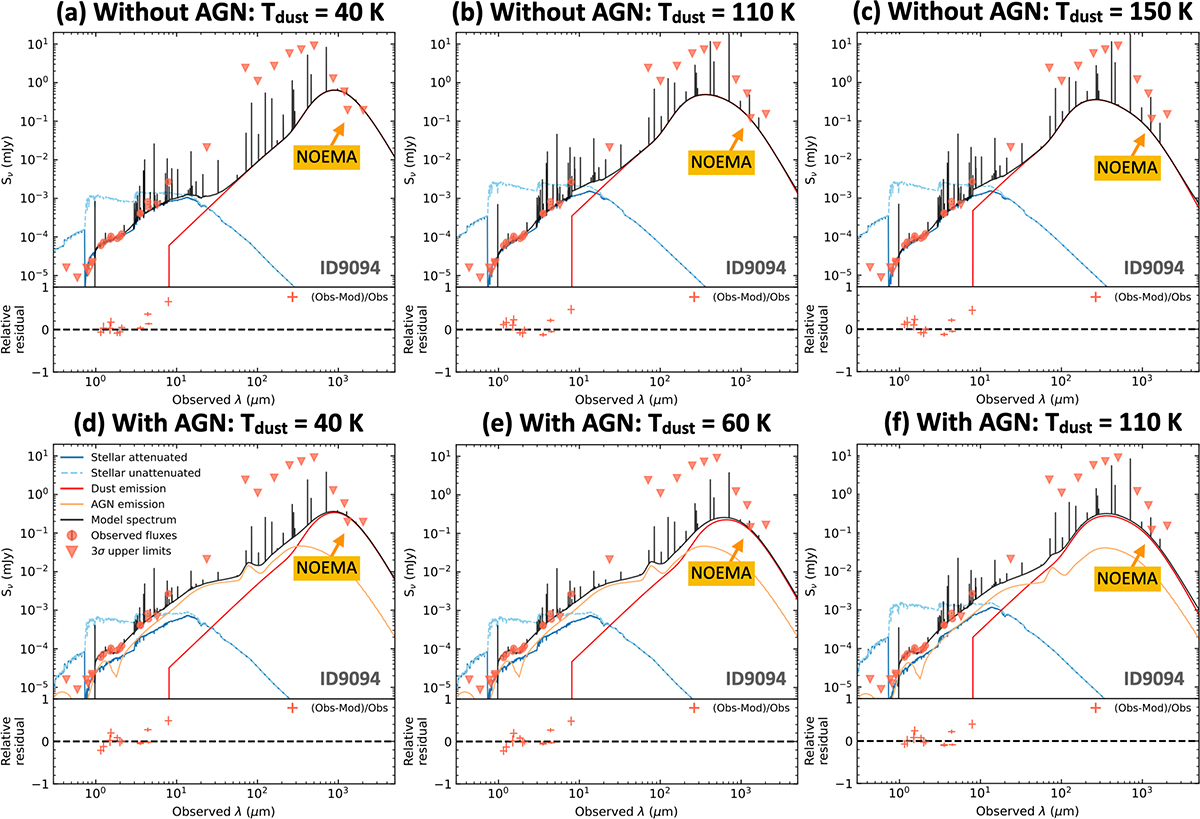Fig. 4.

Download original image
Best-fit SEDs of ID9094 with fixed dust temperatures, providing the first hint of an AGN scenario in this work. Top panels: Best-fit SEDs without an AGN component. Bottom panels: Best-fit SEDs with an AGN component. The 3σ upper limit from NOEMA 1.3 mm, the deepest FIR photometric constraint, is highlighted; it plays a key role in shaping the FIR SED and constraining the lower limit of Tdust. The FIR photometry has been corrected for CMB effects. We show three representative Tdust during the fitting with and without an AGN component, which results in the predicted 1.3 mm flux exceeding (a and d), equal to (b and e), and below (c and f) the observed 3σ upper limit. Panel d shows the fit with an AGN and Tdust = 40 K, which slightly exceeds the 3σ limit but is not ruled out given the model degeneracy and observational uncertainties (see Sect. 3.2.1). Without an AGN, the SED fitting requires Tdust ≳ 110 K. This value significantly exceeds the typical Tdust ∼ 40 K observed in REBELS galaxies at similar redshifts (Sommovigo et al. 2022), and may indicate additional dust heating mechanisms such as AGN activity. In contrast, including an AGN component (bottom panels) allows acceptable fits with Tdust as low as ∼40–60 K, similar to AGNs and/or quasar host galaxies at z > 4 (∼40 − 100 K; e.g., Walter et al. 2022; Tsukui et al. 2023; Tripodi et al. 2023; Decarli et al. 2023), supporting the presence of an AGN in ID9094.
Current usage metrics show cumulative count of Article Views (full-text article views including HTML views, PDF and ePub downloads, according to the available data) and Abstracts Views on Vision4Press platform.
Data correspond to usage on the plateform after 2015. The current usage metrics is available 48-96 hours after online publication and is updated daily on week days.
Initial download of the metrics may take a while.


